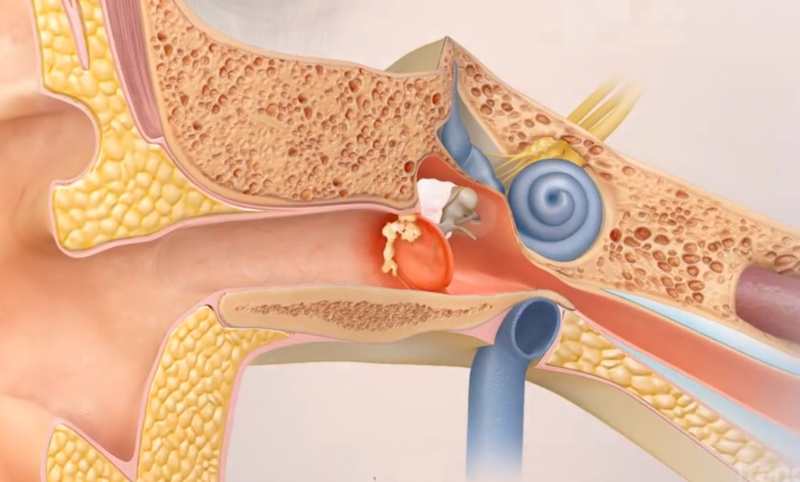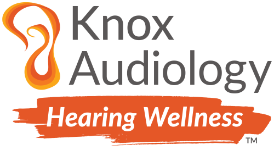What is cholesteatoma?

A cholesteatoma is an abnormal growth of skin that forms a cyst in the middle part of the ear behind the eardrum.
Cholesteatomas are not cancerous, but are capable of causing damage to bones and tissue in the middle ear as they grow in size.
What causes a cholesteatoma?
In rare cases a child may be born with a cholesteatoma, but the majority of cholesteatomas are acquired.
Acquired cholesteatomas often begin with chronic Eustachian tube dysfunction where the Eustachian tube does not provide adequate ventilation to the middle ear. The eardrum becomes sucked in due to the negative pressure of the middle ear space and a retraction pocket can form. When dead skin cells are shed from the eardrum, they get trapped in a sac due to the retraction pocket which slowly grows larger over time.
What are the signs or symptoms of a cholesteatoma?
Conductive hearing loss is a typical symptom. Children who have persistent conductive hearing loss with no discharge may suggest a congenital cholesteatoma.
Recurrent ear infections is a risk factor for the development of cholesteatoma. Intermittent discharge from the ear or a bad smell coming from the ear could also associated with a cholesteatoma.
Facial weakness and balance issues or vertigo could also result from bad cases. Skin produces enzymes that can slowly erode the bone and enlarged cholesteatomas can also extend further in the ear and affect the facial nerve, cochlea and balance organ.
How is a cholesteatoma treated?
The main way to treat a cholesteatoma is surgical removal by an Ear, Nose and Throat (ENT) Specialist. As such, individuals we see for a hearing test in the clinic with middle ear issues that are taking too much time to resolve are advised to speak to their GP about a referral to an ENT specialist for further investigation.
References
Chang P, Kim S 2008, Cholesteatoma – Diagnosing the Unsafe Ear, accessed 18 November 2019, <https://www.racgp.org.au/afp/200808/200808chang.pdf>
American Academy of Otolaryngology-Head and Neck Surgery 2018, Cholesteatoma, accessed 18 November 2019, <https://www.enthealth.org/conditions/cholesteatoma/>
